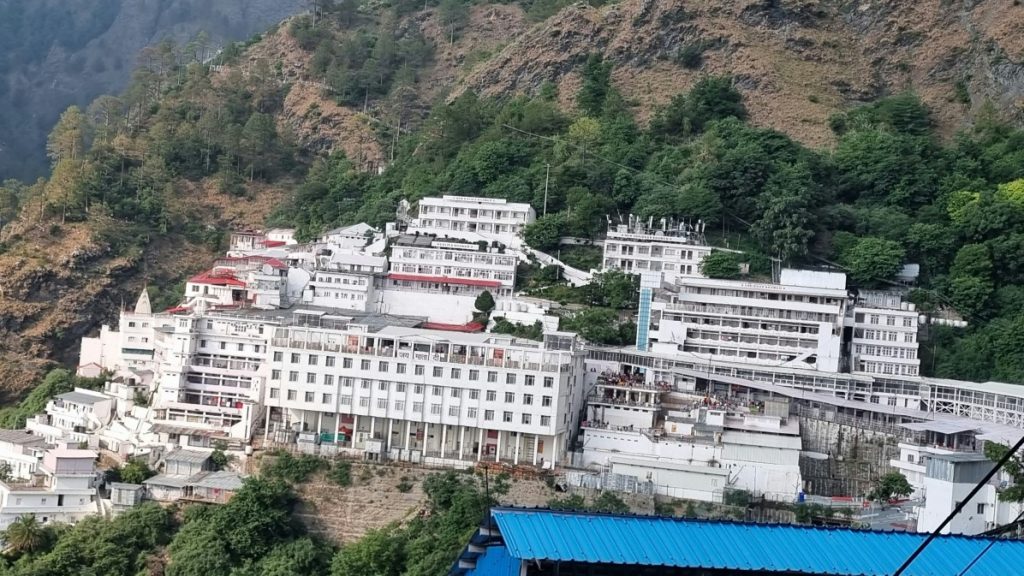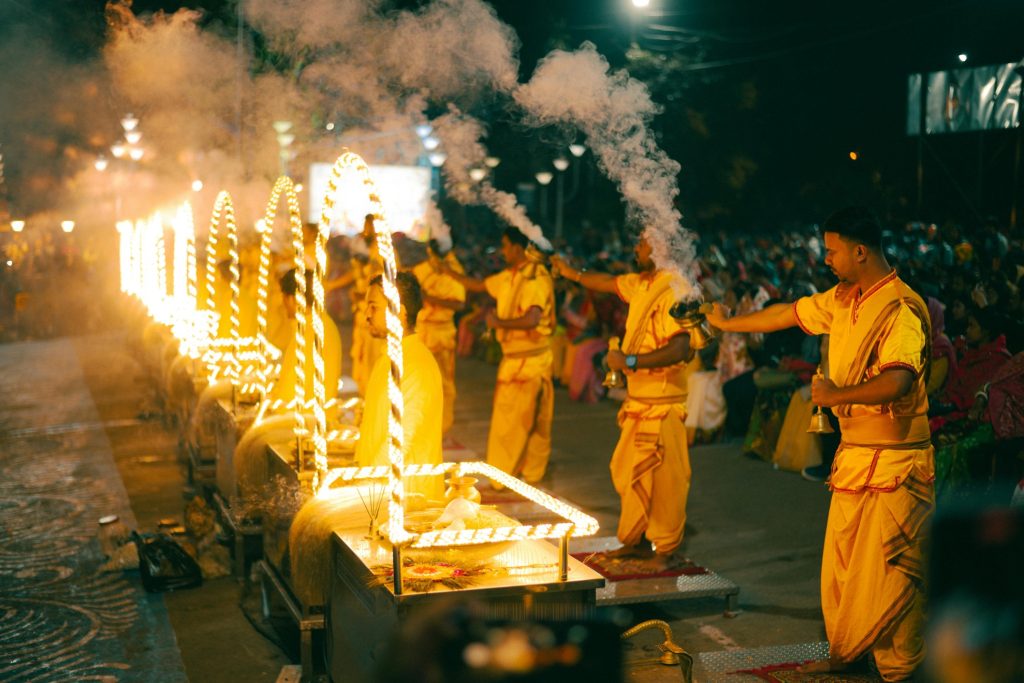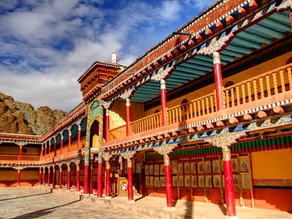Vaishno Devi Travel Guide 2025: Cost, Itinerary, Tips & How to Plan Your Yatra

What’s in this Blog Why Vaishno Devi is a Must-Visit Pilgrimage How to Reach Vaishno Devi Best Time to Visit Vaishno Devi Yatra Registration & Permits Trip Cost & Budgeting Where to Stay (Katra & Nearby) Itinerary Suggestions – 2-Day and 3-Day Trip Plans Helicopter, Pony & Porter Services Things to Carry & Travel Tips Nearby Places to Visit FAQs Final Thoughts Why Vaishno Devi is a Must-Visit Pilgrimage Going to Vaishno Devi in 2025 is more than just a religious pilgrimage. It’s an experience rich in Himalayan beauty, culture, and faith. Vaishno Devi, one of India’s holiest shrines, is tucked away in Jammu’s Trikuta Hills. In the eyes of pilgrims, Mata Vaishno Devi grants the desires of those who come with pure devotion. In addition to the spiritual aspect, the trip offers beautiful trekking routes, friendly locals, and the opportunity to discover hidden treasures. This vaishno devi travel guide includes all the necessary information for anyone planning a vaishno devi trip 2 days itinerary or vaishno devi trip 3 days itinerary. Pro Tip: For smoother planning, reserve your lodging and yatra registration at least two months in advance. How to Reach Vaishno Devi There are multiple transport options to reach Vaishno Devi : By Train: The closest significant train station is Jammu Tawi, which is 48 kilometers from Katra. It is connected to Delhi, Mumbai, and Kolkata by regular trains. By Flight: The closest significant airport is Jammu Airport, which is 50 km away. From there,buses and taxis are too frequently available to travel to Katra . By Road: As Katra has brilliant road connections to Srinagar, Udhampur, and Jammu to travel by road. There are plenty of deluxe buses and taxis too. The actual yatra starts with a 13-kilometer trek to the Bhawan (shrine) from Katra. Pilgrims have three options: walk, rent ponies, or take a helicopter. Pro Tip: To prevent travel fatigue before beginning the trek, get to Katra one day early. Best Time to Visit Vaishno Devi Although the shrine is open all year, there are special experiences to be had in different seasons: Spring (March–May): Beautiful scenery and pleasant weather. Monsoon (July–September):Fewer tourists, but be cautious of landslides. Autumn (October–November):Clear skies and joyous occasions like Navratri. Winter (December–February):snow-covered pathways, fewer tourists, and serene darshan. Pro Tip: Plan during Navratri, but make reservations well in advance, if you want a festive atmosphere. Yatra Registration & Permits Before beginning the yatra, each pilgrim is required to complete the Vaishno Devi online registration. Registering is free and can be done at Katra counters or on the official Shrine Board website. A yatra slip is mandatory at checkpoints. Rules to follow: Carry a valid ID proof. Children under the age of five are not required to register. Refrain from bringing big bags or prohibited items. Pro Tip: For easy passes and updates, download the “Mata Vaishno Devi Yatra Registration” mobile app. Trip Cost & Budgeting The Vaishno Devi trip cost is determined by the services, travel, and lodging selected: Transport (Delhi to Katra): ₹1,500–₹3,000 by train, ₹3,500–₹6,000 by flight. Stay in Katra: The cost of under-budget dharamshalas will be in the range of ₹500–₹1,000 and mid-range hotels is of ₹1,500–₹3,000. Food: The per day price of simple vegetarian meals is of around ₹300–₹600. Helicopter Ride: The estimated cost of helicopter’s one way ride is ₹1,840 per person. Other Expenses: Ponies, palanquins, or porters cost extra. While a comfortable trip may cost ₹12,000 to ₹15,000, a more affordable trip can be planned for ₹6,000 to ₹8,000 per person. Pro Tip: To reduce the cost of food while trekking, bring snacks and reusable water bottles. Where to Stay (Katra & Nearby) There are many different lodging options in Katra: For Pilgrims: Dharamshalas run by trusts and guesthouses near the shrine. For Families: There are under budget accommodations with shuttle services. Vegetarian dining options are too available. For Comfort Seekers: Premium hotels offering mountain views and spa treatments. Pro Tip: To save time ,its better to choose a hotel near the yatra registration counter. Itinerary Suggestions – 2-Day and 3-Day Trip Plans 2-Day Vaishno Devi Itinerary Day 1: Get to Katra, register, and begin the hike that evening. Arrive at Bhawan Darshan at night. Day 2: Go back to Katra in the morning, check out the local marketplace, and then leave for Jammu. 3-Day Vaishno Devi Travel Planner Day 1: Arrive in Katra, relax, and visit neighboring temples. Day 2: Trekking begins early in the morning, with a visit to Bhairon Temple and darshan at Bhawan. Day 3: Before departing, return to Katra and explore Patnitop or Shiv Khori. Pro Tip: Add an extra day if you want to comfortably visit neighboring attractions. Helicopter, Pony & Porter Services Helicopter: For the vaishno devi helicopter booking, use the Shrine Board website to make an online reservation. It takes eight minutes to travel from Katra to Sanjichhat. Ponies & Palanquins: For those who are unable to trek, it is available from Katra. Porters: During the yatra, assist with carrying children or luggage. Although prices vary, in order to prevent overcharging, payments must be made at authorized counters. Pro Tip: Because spots fill up quickly, reserve helicopter rides 60 days in advance. Things to Carry & Travel Tips Light woolens or jackets depending on the season. Comfortable walking shoes. Painkillers, prescription medications, and a first aid kit. For night trekking,Torchlight or headlamp is must to carry. Energy bars and dry fruits for endurance. Pro Tip: Since plastic bags are prohibited near Katra and the shrine, don’t bring them. Nearby Places to Visit After your darshan, if you have time, then check out these attractive places to visit near vaishno devi: Patnitop: A hill station featuring adventure sports and meadows. Shiv Khori: A cave shrine dedicated to Lord Shiva. Jhajjar Kotli: It has a beautiful picturesque riverside picnic area. Bahu Fort, Jammu: It’s a historic fort featuring a Kali temple. Pro Tip: Add an extra day to your itinerary so that you can visit Shiv
Top 7 Ghats in Varanasi for a Divine Experience

Varanasi, the world’s oldest living city, is a sacred destination for pilgrims and spiritual travelers. Situated on the banks of the holy River Ganges, the city’s iconic ghats define its deep-rooted religious heritage, historical significance, and cultural vibrancy. With over 80 ghats in Varanasi, each holding its own importance, choosing the most spiritual ones can be overwhelming. Here, we highlight the top 7 ghats in Varanasi, each offering a unique divine experience and fascinating insights into their history and religious significance. 1. Dashashwamedh Ghat – The Spectacular Ganga Aarti Experience Dashashwamedh Ghat is one of the most famous ghats in Varanasi, renowned for its magnificent Ganga Aarti held every evening. The ghat’s name originates from a mythological tale where Lord Brahma is believed to have conducted the Dashashwamedh Yajna (a ritual of sacrificing ten horses) here to honor Lord Shiva. Why Visit? Experience the grand Ganga Aarti, a mesmerizing ritual with synchronized chants, fire lamps, and devotional music. Best Time to Visit: Arrive by 5:30 PM to secure a good spot before the Aarti begins. Spiritual Significance: Taking a holy dip in the Ganges at this ghat is believed to cleanse sins and bestow divine blessings. Pro Tip: For the best view of Ganga Aarti, rent a boat and watch the ceremony from the river. 2. Assi Ghat – A Tranquil Spiritual Retreat Situated at the confluence of the Ganges and Assi River, Assi Ghat is a revered spot for yoga, meditation, and spiritual seekers. According to legend, Lord Shiva threw his sword (Assi) here after slaying a demon, giving the ghat its name. Why Visit? A peaceful escape from the crowded ghats, ideal for morning prayers and meditation. Morning Bliss: Participate in Subah-e-Banaras, featuring sunrise Ganga Aarti, classical music, and yoga sessions. Serene Atmosphere: Less crowded than Dashashwamedh Ghat, making it perfect for introspection. Pro Tip: Visit early morning to witness the magical sunrise over the Ganges. 3. Manikarnika Ghat – The Gateway to Moksha Manikarnika Ghat is one of the most sacred cremation ghats in Varanasi, where Hindu funeral rituals are performed continuously. It is believed that those cremated here attain moksha (liberation from the cycle of birth and death). Why Visit? A deeply spiritual and thought-provoking experience, offering insights into Hindu philosophy on life and death. Mythological Significance: According to legend, Goddess Parvati lost her Manikarnika (earring) here, giving the ghat its name. Eternal Fire: The funeral pyres never extinguish, symbolizing the endless cycle of existence. Pro Tip: Maintain a respectful and contemplative demeanor when visiting. Photography of cremation rituals is strictly prohibited. 4. Harishchandra Ghat – The Lesser-Known Cremation Ghat Named after King Harishchandra, who was known for his unwavering truthfulness, this ghat is another significant cremation site in Varanasi. It is believed that cremation here also leads to moksha. Why Visit? A quieter alternative to Manikarnika Ghat, offering a profound spiritual experience. Historical Significance: According to legend, King Harishchandra worked at this ghat as a cremation ground laborer to uphold his commitment to truth. Philosophical Essence: A visit here prompts deep reflection on life’s impermanence. Pro Tip: Approach with an open and contemplative mind to truly appreciate the spiritual depth of this ghat. 5. Kedar Ghat – A Sacred Pilgrimage Spot One of the most visited ghats in Varanasi, Kedar Ghat is home to the revered Kedareshwar Temple, dedicated to Lord Shiva. Known for its purifying waters, this ghat attracts pilgrims seeking spiritual rejuvenation. Why Visit? Considered to have one of the purest waters along the Ganges, making it ideal for ritual baths. South Indian Influence: The temple architecture showcases strong Dravidian elements, drawing many South Indian pilgrims. Pilgrimage Hub: Devotees visit to perform sacred prayers and religious rituals. Pro Tip: The underground spring believed to originate from Kedarnath makes this ghat’s water even more sacred. 6. Panchganga Ghat – The Sacred River Confluence Panchganga Ghat marks the confluence of five sacred rivers—Ganga, Yamuna, Saraswati, Kirana, and Dhutapapa (though only the Ganges is visible today). Why Visit? A serene and less crowded ghat, perfect for meditation and spiritual retreat. Historical Significance: Saint Tulsidas is believed to have composed part of the Ramcharitmanas here. Divine Ambiance: Home to several ancient temples, making it a key pilgrimage site. Pro Tip: Spend time here in silent contemplation to absorb the spiritual energy of the place. 7. Bhonsale Ghat – A Royal Architectural Marvel Built by the Bhonsale dynasty of Nagpur, Bhonsale Ghat is known for its magnificent Maratha and Rajasthani-style architecture. Why Visit? A picturesque ghat, ideal for those interested in history and architecture. Temples and Shrines: Features notable shrines like Lakshminarayan Temple and Shiva Temple. Photography Delight: The ornate stone balconies and intricate carvings make this ghat a hidden gem. Pro Tip: A great spot for photographers and history enthusiasts seeking tranquility amidst the spiritual chaos of Varanasi. Frequently Asked Questions (FAQ) Why is Varanasi famous? Varanasi is famous for its spiritual significance, ancient heritage, and the sacred River Ganges. It is one of the holiest cities for Hindus and attracts millions of pilgrims and tourists every year. Why is Varanasi called Banaras? Banaras is an ancient name for Varanasi, derived from the two rivers Varuna and Assi, which flow near the city. Which river flows through Varanasi? The River Ganges flows through Varanasi, making it one of the most sacred pilgrimage sites in India. Which ghat is best for Ganga Aarti in Varanasi? Dashashwamedh Ghat is the most famous ghat for witnessing the grand Ganga Aarti. How many ghats are there in Varanasi? Varanasi has over 80 ghats, each with its own religious and historical significance. Final Thoughts The ghats of Varanasi are more than just riverbanks—they are portals to spiritual awakening, cultural heritage, and divine experiences. Whether you seek peace, enlightenment, or a deep connection with Hindu traditions, these top 7 ghats in Varanasi promise an unforgettable journey into the mystical heart of India’s holiest city. Each ghat has a story to tell, a ritual to witness, and a unique experience
Ayodhya Unveiled: A Spiritual Expedition to Embrace Ram Lalla (Guide)

In Short The Spiritual Core: A deep dive into the 7 most significant spiritual sites in Ayodhya, from the grandeur of the new Ram Mandir to the hidden tranquillity of Surya Kund. Must-Visit Temples: Detailed guides for Ram Mandir, Hanuman Garhi, Nageshwarnath, and the ancient Treta Ke Thakur. Hidden Gems: Discover the lesser-known Kaleramji Ka Mandir and the serene surroundings of Surya Kund. River Rituals: Experience the divine atmosphere of the Sarayu River ghats. Practical Guide: Includes temple timings, best times to visit, and cultural insights for a seamless pilgrimage. Introduction — Where Faith Meets History Greetings, fellow seekers of the divine! Welcome to Ayodhya, a city where the air vibrates with the rhythm of chants and every grain of sand holds a story from the Treta Yuga. For millennia, this city on the banks of the sacred Sarayu River has been the heartbeat of Hindu civilisation. Today, with the consecration of the magnificent Ram Mandir, Ayodhya is experiencing a spiritual renaissance unlike any other. But Ayodhya is more than just one temple. It is a tapestry of ancient shrines, hidden ponds, and fortress-like sanctuaries that tell the saga of Lord Rama, the devotion of Hanuman, and the timeless flow of dharma. Join me as we unravel the layers of this historic metropolis. From the dawn-lit waters of Surya Kund to the majestic spires of the Ram Janmabhoomi, this is your definitive guide to a spiritual expedition in the city of Ram Lalla. 1. Ram Mandir: Where Devotion Takes Form Credit: Unsplash The Heart of India No journey through Ayodhya is complete without visiting the beating heart of the city – the Ram Mandir. This is not just a structure; it is the culmination of a 500-year-old dream for millions of devotees. The Architecture: As you step into the temple premises, the grandeur unfolds before your eyes. Built in the Nagara style of architecture, the temple stands without the use of iron, designed to last a thousand years. The pink sandstone from Rajasthan glows in the sunlight. Marvel at the 392 pillars, each intricately carved with figures of deities, and the 44 majestic doors, some plated in gold. The Darshan: Walking through the Rang Mandap and Nritya Mandap, you finally reach the Garbha Griha (Sanctum Sanctorum). Here stands the idol of Ram Lalla (the infant Rama). The sight of the deity, adorned in silk and jewels with a smile that seems to nurture the soul, is an overwhelming emotional experience. It is a living, breathing embodiment of faith—an anchor for millions. Traveller’s Tip: Entry: Entry is free, but you must deposit phones and leather items in the free lockers outside. Timing: The best time for Darshan is early morning (7:00 AM) or afternoon (2:00 PM) to avoid the peak crowds. 2. Embracing Dawn at Surya Kund The Sun God’s Mirror Our spiritual day trip begins not in the chaos of the city centre, but in the quiet embrace of Surya Kund. Located about 4 kilometres from the main Ayodhya town (near the Darshan Nagar area), this large, rectangular tank is a hidden gem often missed by the hurried tourist. The Legend: According to mythology, when Lord Rama was born, the Sun God (Surya Dev) was so mesmerised that he stayed in Ayodhya for a month to behold the divine child. During his stay, his chariot halted here, creating this kund. It is also believed to be a spot where Lord Rama later meditated. The Experience: Arrive here just before sunrise. The recent renovations have transformed Surya Kund into a spectacle of light and sound. The majestic statues of elephants, the intricately carved walls depicting scenes from the Ramayana, and the mesmerising Laser Sound and Light Show (held in the evenings) make it a blend of ancient sanctity and modern beauty. It is the perfect place to sit in silence and set your intentions for the pilgrimage ahead. Best Time: 6:00 AM for serenity; 7:00 PM for the Light & Sound show. 3. Hanuman Garhi: The Fortress of the Guardian Credit: Unsplash The Protector of Ayodhya In Ayodhya, it is customary to visit the guardian before visiting the King. Perched atop a high mound in the centre of the city is Hanuman Garhi, a fortress-like temple dedicated to Lord Hanuman. The Climb: As you climb the 76 steep stone steps, the air becomes charged with the sound of Hanuman Chalisa and the ringing of temple bells. The climb is symbolic of shedding one’s ego before entering the presence of the ultimate devotee. The Sanctum: The main temple is unique. It houses a statue of a young Hanuman sitting on the lap of his mother, Anjani. It is believed that Hanuman lived here to guard the Ram Janmabhoomi and the city of Ayodhya. The aura of spirituality, combined with the panoramic view of the city from the ramparts, creates an atmosphere that resonates with power and protection. Ritual: Don’t forget to offer Laddoo here, Hanuman Ji’s favourite sweet. 4. Treta Ke Thakur: A Glimpse into the Ancient Past The Site of the Ashwamedha Yagna Venture off the beaten path near the Naya Ghat area to discover Treta Ke Thakur. This temple stands as a silent witness to the evolution of spirituality over millennia. The History: This historic shrine marks the spot where Lord Rama is believed to have performed the Ashwamedha Yagna (Horse Sacrifice Ritual) to establish righteousness and sovereignty. The temple opens to the public only once a year on Ekadashi, but the exterior and the surrounding ghats are accessible year-round. Inside, the idols are carved from a single block of black sandstone (Kasauti stone), said to be from the era of King Vikramaditya. Standing here, you can feel the ancient vibrations of the Treta Yuga. It is a moment of communion with the roots of Indian spirituality, a connection that transcends the boundaries of time. 5. Kaleramji Ka Mandir: A Treasured Secret The Survivor of Time Embark on a journey through Ayodhya’s narrow lanes near the Swarg Dwar area
Republic Day 2023: Unwind yourself with one of these Long Weekend Getaways

With the onset of 2023, travelers get to start fresh on their travel resolutions for the new year. As the country celebrates its 74th Republic Day, we believe that the overwhelming national feeling of patriotism, pride, and unity should be intertwined with the joy of travel. So why not make the most of it by going on one of the long weekend getaways from our very own highly crafted list of best offbeat places to travel this long weekend on Republic Day 2023? Why not take a moment and get doused in the colors of freedom of travel? Republic Day, January 26 is a gazetted holiday. With R-Day falling on Thursday, if we take a one-day holiday from our work realm (Friday), we can buy ourselves a memorable weekend with the complimentary Saturday-Sunday (January 28-29)! Wondering what can happen in just 3-4 days? The question should be, what NOT can happen over 3-4 days? Here are some suggestions to plan a getaway from Delhi-NCR. Folk, don’t worry we got you covered and included some great rural and hidden gems of India where you can travel from anywhere in India and Make Memories to Last a Lifetime. Table of Contents: Single Day Getaways Short Weekend Getaways Long Weekend Getaways SINGLE-DAY GETAWAYS [ RURAL ] Credit: unsplash.com Agra is the perfect destination, If you’re in the mood for a relaxing and luxurious retreat, Popularly Known for the iconic Taj Mahal, Agra also offers a variety of other historical monuments, delicious street food, and traditional bazaars to explore. Credit: unsplash.com Binsar is at an altitude of around 2,420 Meters from sea level and is an easy trekking destination, it is located amidst the lush greenery, an exotic environment, that will provide you with much-needed relaxation. The major attraction of Binsar is the panoramic view of the mountains from zero point. If you are an Instagram freak this place is heaven for you, it is an ideal place for sightseeing, birdwatching, nature lovers, and photographers. Credit: depositphotos.com If you love jungle safari or wish to immerse in chaotic greenery, then this can be the best place for a one-day trip close to nature, It is just a few hours away from Delhi, Located on the banks of the Ramganga Reservoir in Uttarakhand, this national park is rich in flora and fauna, if lucky, then you can also catch a glimpse of endangered wild animals like tigers, leopard or wild elephants during the early morning forest safari. Credit: unsplash.com For travelers who believe that the journey itself is more important than the destination, planning a road trip to McLeod Ganj is a must. Located almost 474 Km away from Delhi, it will take around 10-12 hours to reach this lovely hill town. This place is best known for its Tibetan influence, so much so that it is also known as ‘Little Lhasa’, Be it treks, camping, exploring monasteries, shopping at local markets, gobbling down a steaming plate of momos at a quaint little cafe on a hilltop, or simply indulging in rejuvenating experiences through yoga and spas, this place is a traveler’s paradise. SHORT WEEKEND GETAWAYS [ URBAN ] Republic Day 2023 is just around the corner and it’s time to plan your short weekend getaway from Delhi. Whether you’re looking for adventure, relaxation, or a mix of both, there are plenty of options for you to choose from for short weekend getaways this Republic Day. Credit: unsplash.com Rishikesh is one popular destination for outdoor enthusiasts, the ‘Yoga Capital of the World’. Here, you can experience the thrill of white-water rafting, bungee jumping, and zip-lining while also immersing yourself in the spiritual culture of the city. Credit: unsplash.com Sariska Tiger Reserve to go closer to mother nature & admire it, another great option for a short weekend getaway from Delhi is the Sariska Tiger Reserve. Located in the Aravalli Hills, it offers a chance to spot tigers, leopards, and a variety of other wildlife on a jeep safari. Credit: unsplash.com For adventure seekers, why not take a road trip to the famous Spiti valley, known for its barren landscapes and remote Buddhist monasteries? And for the history buffs, head to the city of Jaipur, also known as the “Pink City” famous for its fort and palaces. LONG WEEKEND GETAWAYS [ RURAL ] Credit: unsplash.com Khonoma, Nagaland is a small village located in the northeastern state of Nagaland. The village is known for its traditional Angami Naga architecture and is a popular destination for visitors interested in learning about the local culture and customs. On a Republic Day Road Trip, visitors can witness the traditional celebrations of Republic Day in Khonoma and can also visit the Khonoma Nature Conservation and Tragopan Sanctuary, which is home to the rare Blyth’s Tragopan. A local guide will cost Rs 500 for the entire day and a small entry fee of Rs 50, generally collected at the village gate. Credit: unsplash.com Lambasingi, Andhra Pradesh is a small hill station located in the Eastern Ghats mountain range. It is known for its picturesque scenery and cool temperatures, making it a popular destination for visitors looking to escape the heat. On a Republic Day Road Trip, visitors can witness the Republic Day celebrations in Lambasingi and can also enjoy various activities such as trekking, bird watching, and paragliding. Credit: tripoto.com Lava, West Bengal is a small town located in the Darjeeling district of West Bengal. It is known for its scenic beauty and is a popular destination for visitors looking to explore the natural beauty of the region. On a Republic Day Road Trip, visitors can witness the Republic Day celebrations in Lava and can also visit the Lava Monastery, which is a popular attraction in the area. Credit: unsplash.com Katao, Sikkim is a small village located in the northeastern state of
7 Must-visit Monasteries in Ladakh

Buddhism, one of the main religions of Ladakh has deep roots in its rich cultural heritage. The marvelous Buddhist monasteries in Ladakh date back centuries before modern times and are a chief source of attraction to tourists. The monasteries in Ladakh are popularly known for their annual festivals, vibrant paintings, and pieces of Buddhist art that mesmerize the viewer. These Buddhist gompas are architectural marvels providing a soothing ambiance with alluring visuals. Must Visit Buddhist Monasteries in Ladakh These are a few Buddhist monasteries in Ladakh which are an essential addition to your itinerary. Here is a list of the most beautiful and must-visit Buddhist Monasteries in Ladakh: 1. Hemis Monastery 2. Diskit monastery 3. Lamayuru Monastery 4. Thiksey Monastery 5. Korzok Monastery 6. Alchi Monastery 7. Likir Monastery 1. Hemis Monastery Arun Sundar @ Flickr The Hemis monastery is situated about 45 kilometers from Ladakh. The beautifully endowed monastery is dubbed the richest monastery in Ladakh. According to tales, the Hemis Gompa dates back to the 11th century. It was later re-established in 1672. The monastery has prayer flags on all four sides and a beautiful display of idols stupas and thankas along with a library of Tibetan books. The Hemis monastery is famous for its two-day annual Hemis festival. Since Hemis is in the close periphery of Leh, it can easily be visited in one day. Annual festival: The Hemis Festival is celebrated on the 10th day of the fifth month of the Tibetan calendar. It is famous for the unfurling of a giant thangka (a religious painting) Travelers tip: The souvenir shop is inexpensive and neat don’t forget to buy something as a memory. Travel this route by hiring a bike to enjoy the beautiful scenery and soothing air. 2. Diskit Monastery Srivathsa Rao U @ Flickr The origins of the Diskit monetary trace back to the 14th century making it the oldest monastery in Ladakh. It is situated on a hill 3144 meters above the flood plains of the Shyok river The monastery is home to the famous Maitreya Buddha statue, a significance of world peace and love embedded just below it. The statue is decorated with traditional patterns and vivid colors making it appealing to the eye. The monastery is a hub of ancient literature. It also holds statues of fierce deities and has a massive drum placed inside a hall. You can find many shrines and transcripts as well as generation-old paintings in this monastery. The monastery is situated on top of a hill in Nubra valley and is easily approachable by road. Annual festival: Deskit Gustor Festival is celebrated in early October and is famous for the burning of an effigy of a demon. Travelers tip: head to the parking to get mesmerizing pictures of the valley, the statue, and the Diskit monastery. 3. Lamayuru Monastery Bino Caina @ Flickr Located on the Srinagar- Leh highway about 127km from Leh, the Lamayuru monastery is a must-visit place for sightseeing. It is one of the largest monasteries in the region and is known for its ‘lunar’ landscape more popularly known as the Lamayuru moonscape. The Lamayuru moonscape provides fascinating visuals of mesmerizing geological formations. The monastery is affiliated with the Drikung Kagyu school of Buddhism. Lamayuru means ‘sauwastika’; a symbol of eternity. History states that the Indian scholar Naropa founded the monastery in the 11th century by drying up a lake. The Lamayuru monastery can easily be covered within a day while visiting Leh. Annual festival: The Yuru Kabgyat festival is celebrated in the months of June/ July and is popular for its traditional cham dance. Travelers tip: Enjoy the humor of the hand-painted road signs on your way to the monastery while simultaneously enjoying the moon-like landscape 4. Thiksey Monastery roman korzh @flickr Popularly known for its gigantic structure, the Thiksey monastery is located on top of a hill, 19 kilometers away from Ladakh, and provides a stunning view of the Thiksey village. The monastery is home to many elements of traditional Buddhist art pieces including the Bhavacakra (Wheel of Life) with images signifying ignorance attachment and aversion. It is decorated with wall paintings and has a 49ft tall Maitreya Buddha statue in the temple which was made to commemorate the visit of the 14th Dalai Rama. The resemblance of the architecture with the Potala Palace in Lhasa, Tibet, has caused it to be named ‘Mini Potala’. The building is painted in ochre, red, and white contrasting with the brown landscape and making it visible from afar. Annual festival: The annual ‘Gustur festival’ is held here on the 17th to 19th day of the Tibetan calendar. The main highlight of this festival is the sacrificial ceremony. Travelers tip: The monastery offers food and lodging for a very affordable price you can stay and attend the morning prayers before leaving 5. Korzok Monastery Lopamudra Barman @ Flickr The 156-year-old monastery is located in Korzok village in Leh at a height of 4560 meters. The monastery has statues of Shakyamuni Buddha. The monastery is a house for 70 monks. The chief attraction of the monastery is the picturesque view of Tso Moriri Lake. The lake is also of great sacred importance and is termed a ‘Sacred Gift for a Living Planet’ by the local people. The name of the monastery means ‘taken by unfair means’ signifying the exploitation of nomads by the monastery. The monastery is a must-visit location in Leh and can also be visited while traveling to Manali. Annual festival: The annual Korzok Gu-stor festival held in January is a source of attraction to many nomads making different cultures visible. Travelers tip: Traveling this route with a local driver makes it more fun as you will come across many small yet beautiful villages on this route. 6. Alchi Monastery



